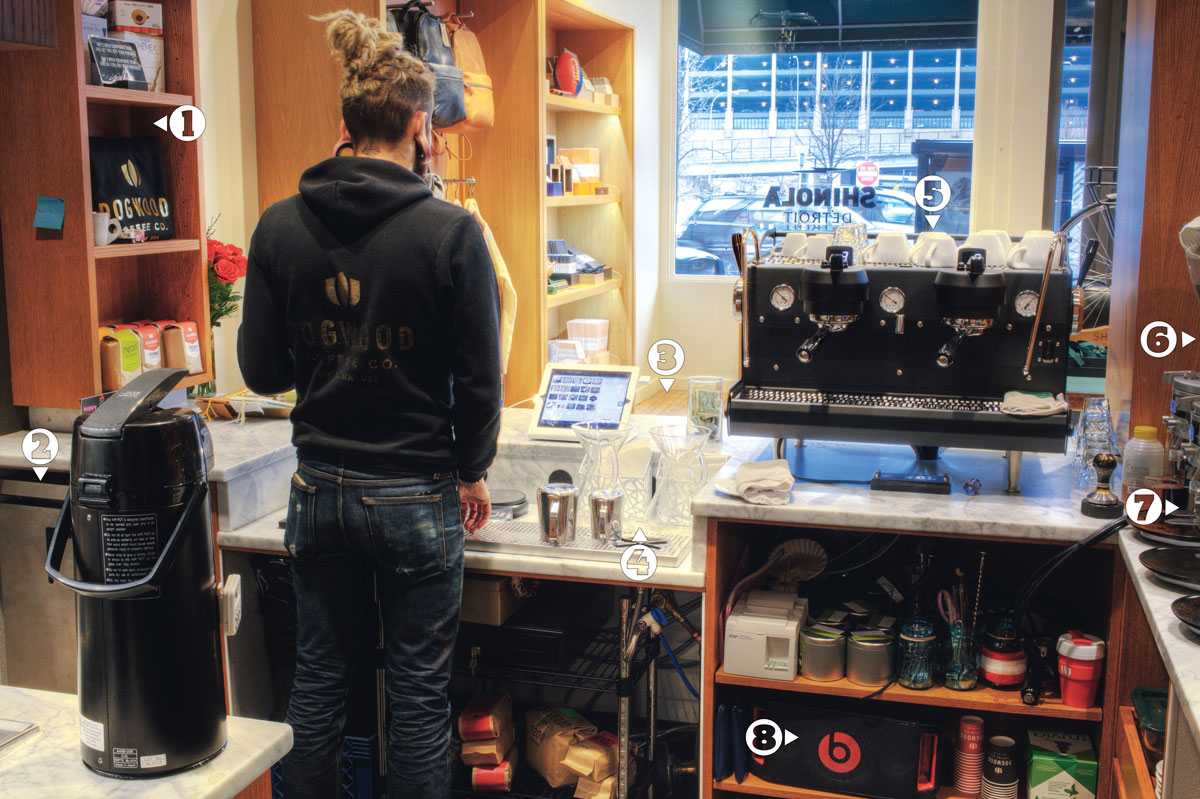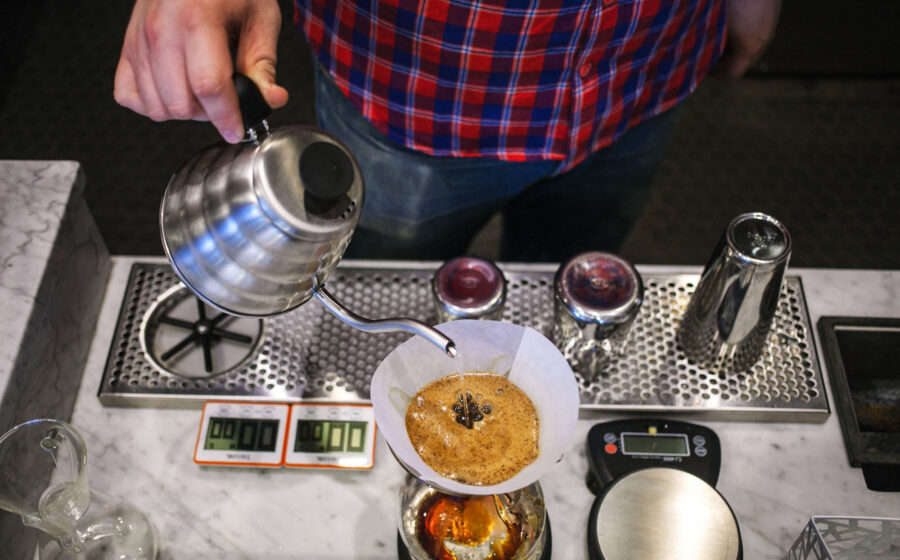Creating the bar in a café is an exercise in thinking about the inside of a box, conceptualizing the what and the where and the flow within a bounded space. The cafés that most often grab attention are those placed in an expansive blank-canvas of a building, where the most interesting decision for the bar is the balance between aesthetics and barista efficiency. Small cafés, where the bar isn’t a design element but instead the whole deal, often get overlooked for cafés whose only limitation is the budget.
Dogwood Coffee Company in Minneapolis had nothing but restrictions for its newest café, which opened in October. The space is about the size of a walk-in closet, it’s inside another business, and the marble bar had already been built. Shinola, a Detroit-based maker of watches and bicycles and other high-end goods, had planned to run a brew bar at its new Minneapolis store but soon abandoned the idea and asked Dogwood to take over. In a space designed for pour-overs, Dogwood decided to create a full coffee bar.
Keith Mrotek, the café’s manager, helped design the space, though maybe it’s better to say he helped populate the bar and refine the workflow. “It’s fun to find how small and fine-tuned you can make a space,” he says. Sorting out where cups go, how big of an espresso machine fits, what number of grinders can be used, these aren’t decisions about what is best but about what can be crammed where without a mess busting out.
The context of the coffee bar even affects Mrotek’s coffee selection. At another Dogwood café, a customer has often sought out a coffee experience, but at the Shinola location customers usually have stumbled upon the café. That customer more likely wants a quick cup of coffee. For batch brew, then, Mrotek sticks with blends or Central American coffees with familiar profiles. A Sulawesi could be ordered, but the customer intentionally chooses it.
Being inside another business, the café is a bit hidden, though Dogwood has branding on the storefront. Mrotek thinks about half of their customers now come into Shinola for coffee. So far the coffee bar has needed just one barista at a time, but Mrotek expects soon to need two in the tiny space. He’s been pondering how the two will interact. The POS system is between the espresso machine and the knock box and refrigerator. One barista may need to hand the portafilter to the other to knockout the puck.
Making a latte could become a Fred-and-Ginger dance routine.
A Breakdown of Dogwood’s Coffee Gear and Bar Workflows

1. The Display: With little space for merchandise these three shelves showcase Dogwood’s coffee, T-shirts, and brewing equipment.
2. The Backward Fridge: Manager Keith Mrotek says the one major fault of the space is that the fridge opens into the middle of the bar, forcing baristas to reach over the door to get milk.
3. Brew Bar: The brew bar was built before Dogwood took over and directed the layout of the space.
4. Batch Brew: The café originally had a batch brewer, but another Dogwood café needed it so now they brew in two ten-cup Chemexes and deposit the coffee in the dispenser.
5. Two-group: When the bar opened it had a single-group machine that Mrotek said just couldn’t keep up. The two-group Synesso hasn’t missed a beat.
6. Three Grinders: Three Mahkönig K30 grinders are devoted to Dogwood’s Neon blend, a rotating single-origin espresso, and a decaf.
7. Syrups: Along with Neeson and Mason Madagascar vanilla, Ames Farm honey, and Scharffen Berger and Askinosie chocolate, the Shinola café features Mrotek’s Norski milk, a milk syrup made with lingonberries, cinnamon, nutmeg, and honey.
8. Beats by Dogwood: Dogwood and Shinola don’t share exact hours, so when the café is open and the store isn’t, the tunes are played on this small portable speaker.
—Cory Eldridge is Fresh Cup’s editor. He recommends the Run Well 41 mm watch.

















